MARIANI’S
Virtual
Gourmet
March 8,
2015
NEWSLETTER
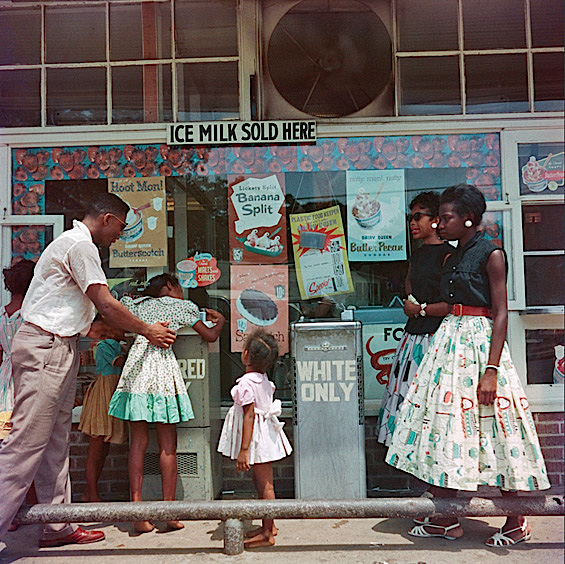
"Colored
Only" photo by Gordon Parks for Life
Magazine (1956)
IN THIS ISSUE
BURGENLAND, AUSTRIA
By John Mariani
NEW YORK CORNER
RACINE'S
By John Mariani
NOTES FROM THE WINE CELLAR
THE WINES OF BURGENLAND
By John Mariani
❖❖❖
BURGENLAND, AUSTRIA
By John Mariani
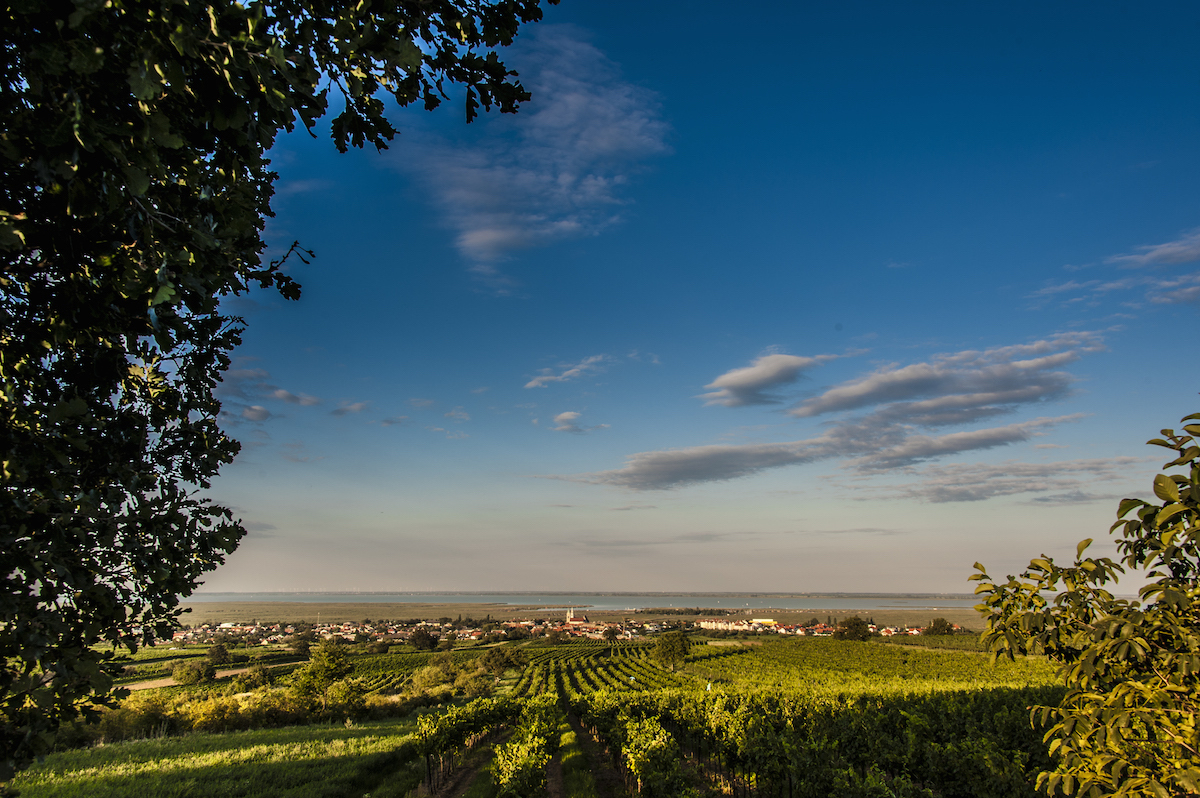
Lake Neusiedl
As I write this, there are still
six inches of snow on the ground in New York, but
when you read this, the wildflowers may well be
bursting from the rich soil of Burgenland in
southeastern, Austria, and the grape vines getting
ready to bud.
I shall be writing about Austrian
wines in another column (below), but I could ignore them
entirely and still convince you that Burgenland,
about an hour from Vienna and bordering on Hungary,
Slovenia and Slovakia, is well worth visiting for
its natural beauty alone. This is not an area dotted
with little Hansel-and-Gretel-style cottages, for
the Burgenlanders are a practical people who live in
minimally decorated, comfortable stucco homes. But it is
rich as a place where dwell hundreds of species of
birds and indigenous breeds of cattle that include
the longhorn Graurinder
(gray cattle), white donkeys, water buffalo, and
Mangalitza
pigs famous for their delicately flavored meat.
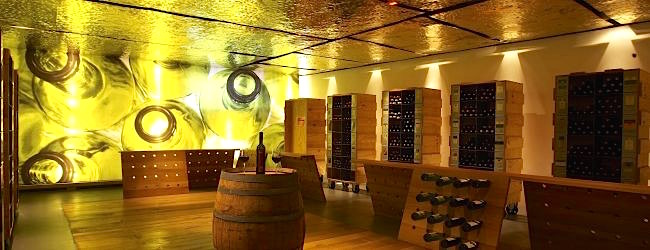 Watered and
fed by Lake Neusiedl (a UNESCO World Heritage Site)
in the eastern parts of the Alps, the region is home
to six nature parks, including the huge National
Park, founded in 1993. Indeed, the park is prime
bird-watching territory, and people are more likely
to be seen on their bikes or hiking through the
marshes than driving cars. The birds range from the great gray
shrike (Raubwürger)
and short-eared owl (Sumpfohreule)
to the red-tailed phalarope (Odenshühnchen)
and the imperial eagle (Kaiseradler).
Watered and
fed by Lake Neusiedl (a UNESCO World Heritage Site)
in the eastern parts of the Alps, the region is home
to six nature parks, including the huge National
Park, founded in 1993. Indeed, the park is prime
bird-watching territory, and people are more likely
to be seen on their bikes or hiking through the
marshes than driving cars. The birds range from the great gray
shrike (Raubwürger)
and short-eared owl (Sumpfohreule)
to the red-tailed phalarope (Odenshühnchen)
and the imperial eagle (Kaiseradler).
My wife and I visited Burgenland
last autumn, when most of the foliage and harvesting
had taken place, so we contented ourselves with
visiting the towns, restaurants, and one very
special castle in the region. On our
first day, we visited the small lakeside village of
Gols, now
famous for its exceptionally well done Weinkulturhaus
(Wine Culture House), which not only stocks more
than 400 Austrian wines (above) but has a beautifully
lighted stone wine cellar to visit.
Afterwards
we sat down for lunch at nearby Restaurant
Varga, whose sign reads “FISCH” in big
letters, and whose ingredients
come straight from the lake each day. Only 14
fishermen are allowed to work in the lake, and Varga
has its own, most of whom use nets and traps, not
hooks.
Varga’s interior is old-fashioned Austrian
décor, with heavy wood and heavy antiques, but come
spring the outside tables are where you want to dine
in the sunshine. The menu, on any given day, will be
rich with zander
(walleye pike), perhaps with eggplant and pumpkin
puree; wels (catfish)
with tomato, zucchini, potato dumpling and bacon (right); or hecht
(pike), simply sautéed with boiled buttered
potatoes. Drink
the restaurant’s own wine, name Zummitnehmen.
Prices are according to availability of the fish.
After lunch we visited the
remarkable Dorf Museum,
a labor of love crafted almost singlehandedly by
Christine and Josef Haubenwallner as homage to the
farming heritage of the great plain. It is a kind of
amiable ghost town lined with small houses, a
schoolroom, grocer’s shop, post office, craftsmen’s
shops, bakery, even an old cinema, all reclaimed
from a century of village life now largely vanished.
That
evening we stayed on the grounds of the
extraordinarily baroque Schloss
Halbturn Castle (below), built
in 1711 as a hunting lodge for Holy Roman Emperor
Charles VI, who gave it to his daughter, Empress
Maria Theresa of the Hapsburg Dynasty. Today it
is a museum with a small hotel owned and cared for
by the very cordial Waldbott-Bassenheim family,
which also oversees the vast Markus Count of
Koenigsegg winery, well known for its Pinot Noirs.
 The castle is home to a
superb collection of furniture, as well as a
glorious 1765 ceiling fresco “Allegory of Time
and Light” by Franz Anton Maulbertsch, given as a wedding
present for Archduchess Marie Christine. The rooms are ideal as
galleries for the highly popular seasonal art
exhibits, concerts, and garden parties, including an
annual visit from Vienna’s famed Lipizzaner
stallions.
The castle is home to a
superb collection of furniture, as well as a
glorious 1765 ceiling fresco “Allegory of Time
and Light” by Franz Anton Maulbertsch, given as a wedding
present for Archduchess Marie Christine. The rooms are ideal as
galleries for the highly popular seasonal art
exhibits, concerts, and garden parties, including an
annual visit from Vienna’s famed Lipizzaner
stallions.
The hotel's guest rooms, located
in a building across the courtyard, have all been
refurbished in a very minimalist, modern style--ours
in a riot of bright orange colors. Down the
winding staircase is a wholly charming dining room,
Restaurant Wieser (below), with
wooden booths and beautifully set, candlelit tables
where we enjoyed hearty autumnal fare that included
that wonderful Mangalitza pork scented with rosemary
(€12.80), and
chicken paprika with housemade noodles and
sauerkraut (€9.80). Complete meals range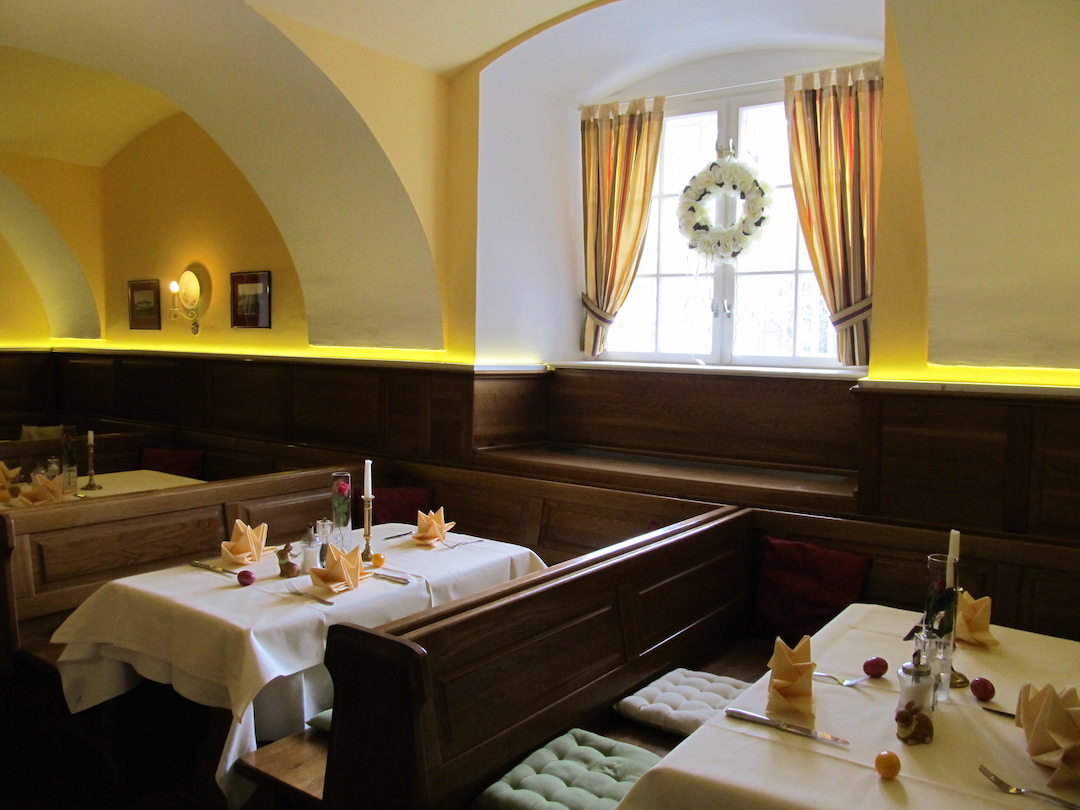 from €18 to €25, or you
can order à la carte. Lingering here over coffee and
candlelight gave us a sense that Burgenland can seem
as remote and removed from Vienna as Capri is from
Naples.
from €18 to €25, or you
can order à la carte. Lingering here over coffee and
candlelight gave us a sense that Burgenland can seem
as remote and removed from Vienna as Capri is from
Naples.
The next morning we drove to
Burgenland’s largest town, Eisenstadt (Iron City),
actually a small city of just 13,000 residents, its
center dominated by the magnificent Esterhazy Palace (below), once
owned by one of the richest of the Hapsburg families
and now wholly restored to 19th
century grandeur, with several floors of superb and
opulent furniture befitting the family’s station. There is
also a grand music hall with impeccable acoustics,
where many of Haydn’s works were first performed.
We had a really splendid lunch at
one of the town’s finest, most modern restaurants, Henrici,
located within the palace’s former royal stables,
with a menu featuring foods cooked on a lava stone
grill, like juicy suckling pig and crispy potatoes. The
interior, reached through glass doors, has high,
barrel-shaped ceilings, and fine modern tables,
chairs and a counter, all lighted by brightly
colored, glowing lamps.
We began with goose liver with
apple-poppyseed chutney (€15) and herb- marinated
lake trout with roe, with an avocado potato salad
and Mangalitza bacon (€13), and a dish of marinated,
fried cep mushrooms with a chervil cream (€14).
Our main courses included a dead ringer for
Southern fried chicken (€16), here served with
potato and corn lettuce, and sliced filet of beef,
which came with herbed dumplings (€19). We
finished our meal with curd cheese dumplings and
stewed plums (below)
and a lovely chestnut cake with red wine pear and
plum jam sorbet. 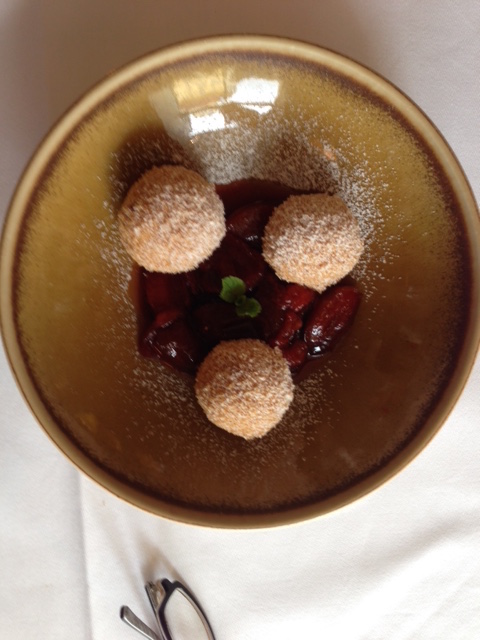
That
evening we dined at a very new restaurant with an
even more modern look and menu--Zur Blauen
Ganz (Blue Goose), whose owner, Peter
Szigeti, is also proprietor of one of the region’s
most forward-looking wineries, Szigeti
(see article
on Burgenland wines below). There
are two dining rooms here, both brightly lighted and
therefore very convivial, and the menu ranges far
and wide for its effects while still using
Burgenland’s products as much as possible. Thus, we
enjoyed dim sum with black pudding and sauerkraut as
well as foie gras with plums and brioche (€15);
there was sushi with polenta (€13), and carpaccio
with apple and horseradish (€9). One of the best
dishes was a white zucchini soup with burrata
cheese and roast beef and black olives served on the
side (€8.50).
Grilled wild shrimp with romaine lettuce and
kohlrabi (€19) was simple and perfect, and the cold
autumn air was kept at bay by a gutsy gulasch soup
with
black caraway and garlic (€6.50). There was also a
traditional form of Tafelspitz--boiled beef with
Sardinian fregola
(€20).
Desserts (left) were
sumptuous—mango and coffee with hazelnut crisp (€8),
and a rich chocolate brownie with vanilla ice cream
(€7).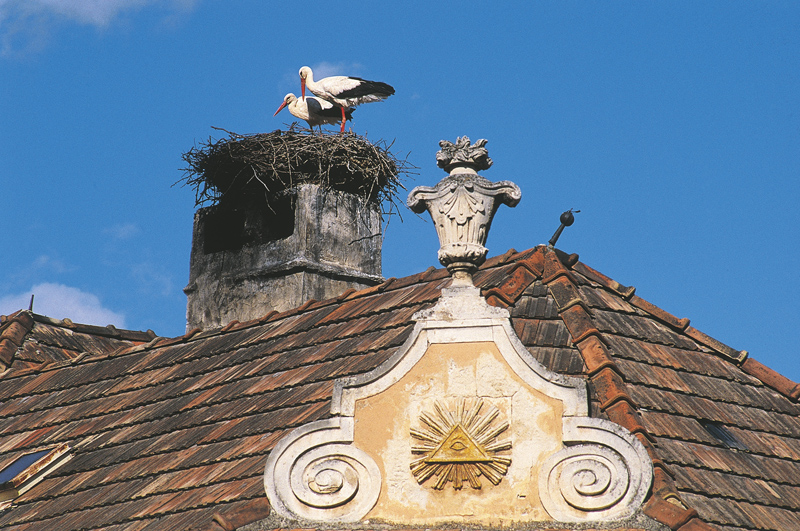
One
of the few towns in Burgenland that probably
concurs with tourists' expectations of
quaintness is Rust
(below),
granted "free state" status by the Holy
Roman Emperor, whose broad streets end at
the waterline and whose chimneys are famous
perches for storks (right).
The
Austrian Wine Academy is also located in the
city, which is surrounded by vineyards that produce
its principal income and its most famous sweet wine,
Ruster Ausbruch. The
main streets are mostly off limits to cars,
and charming shops
line the few blocks of the center. You walk through
Rust at a slow pace, through archways, past the town
hall and the Gothic Fischerkirche church. The
wine taverns, called Bushenshanken, are gregarious
gathering places. Most buildings date back to the
16th through 19th centuries, with mildly baroque
façades mounted with royal heraldic
decorations. It's a storybook village, home to
only 300 or so citizens, and for its beauty is
actually protected by the Hague Convention for the
protection of Cultural Property in the Event of
Armed Conflict, which one hopes will keep Rust from
ever changing. Once at the gates, the
barbarians will be asked to leave. . . politely.
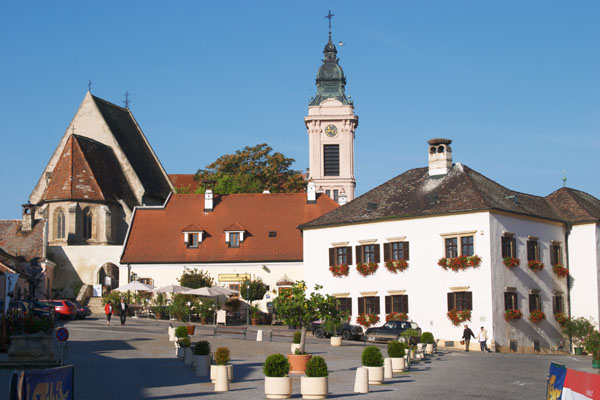
NEW YORK CORNER
By John Mariani
Photos: Evan Sung
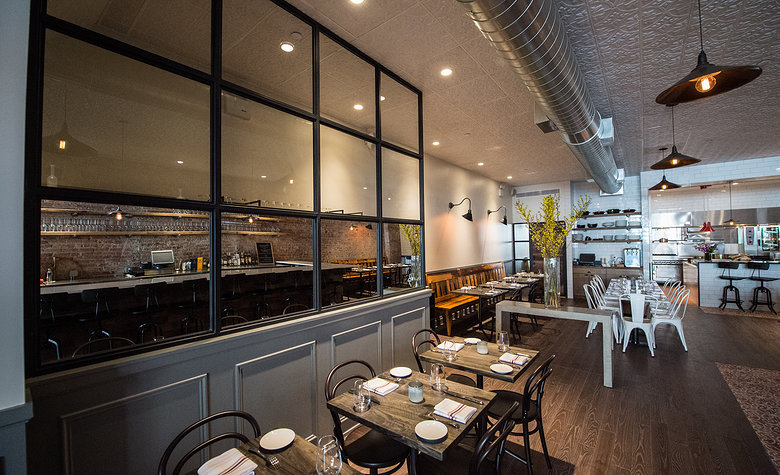 RACINES NY
RACINES NY94 Chambers Street (off Broadway)
http://www.racinesny.com
Translations of French into English can be awkward when it comes to restaurants, like those failed attempts opened by celebrated absentee chefs Alain Ducasse, Louis Outhier, Jacues Maximin, and Claude Baills. One enchanting exception is Racines, the year-old offshoot of two Paris wine-centered restaurants of the same name (on Rue de l’Arbre Sec and Passage des Panoramas).
The décor of the NYC branch evokes those of its predecessors, and the style of cooking is fresh, modern and wholly personalized, in this case by Chef Frédéric Duca (below), a native of Marseilles, who’s worked at top restaurants like Le Martinez in Cannes and Hélène Darroze in Paris, receiving his own Michelin star at his restaurant L'Instant d'Or in Paris in 2013.
Racines NY does not call itself a wine bar, but partner David Lillie, owner of Chambers Street Wines, and owner/sommelier Arnaud
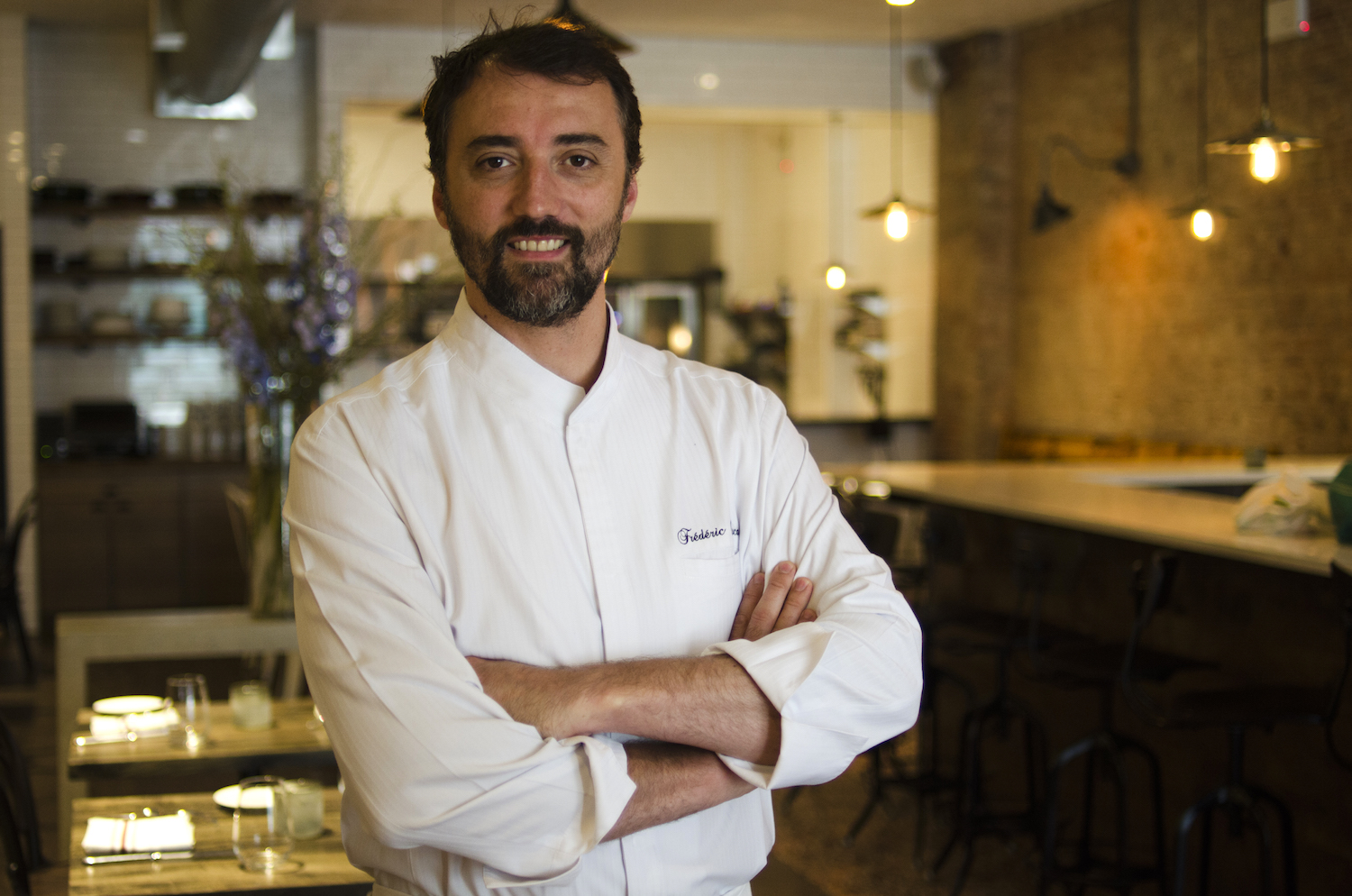 Tronche’s cache of
ever-changing natural, organic and biodynamic
wines underpins the thrust of the little Tribeca
restaurant, with two cellars stocked with more
than 800 labels, 9,000 bottles, and 40 reds and
whites available by the glass (starting at $9). Indeed,
the restaurant’s name does not refer to the French
neo-classical dramatist Jean Racine but to
winemaker Claude Courtois’s signature “Racines”
blend.
Tronche’s cache of
ever-changing natural, organic and biodynamic
wines underpins the thrust of the little Tribeca
restaurant, with two cellars stocked with more
than 800 labels, 9,000 bottles, and 40 reds and
whites available by the glass (starting at $9). Indeed,
the restaurant’s name does not refer to the French
neo-classical dramatist Jean Racine but to
winemaker Claude Courtois’s signature “Racines”
blend. The slip of a dining room is not unlike many in the neighborhood--a mix of white subway tiles, wooden floors and tables, exposed brick and duct work, and hanging lamps, with a small open kitchen, with marble counter for four people, where Mr. Duca and his staff work their magic. Photos of French vintners dot the walls. It’s a pretty place, unpretentious and convivial, and somehow the noise level is not too high, given the soft surfaces here. My wife and I talked our heads off amiably all night.
You may dine at the bar on charcuterie and small bites, but the menu in the main part of the room is where you’ll discover just how inventive Mr. Duca can afford to be, largely because his techniques are so indelibly grounded in the principles of traditional French cuisine. Thus, a dish of sautéed snails are as French as you’d ever wish, with watercress and roasted garlic accompanied by saffron potato croquette ($12). Sea scallops are flash sautéed and served with sunchokes, hazelnut, juniper and orange ($35), and in his rendering of a perfectly steamed egg with polenta, Comté cheese, and a lush foie gras sauce ($12, with black truffles $20 supplement) you taste just how precise his cooking is, with every element in elegant balance.
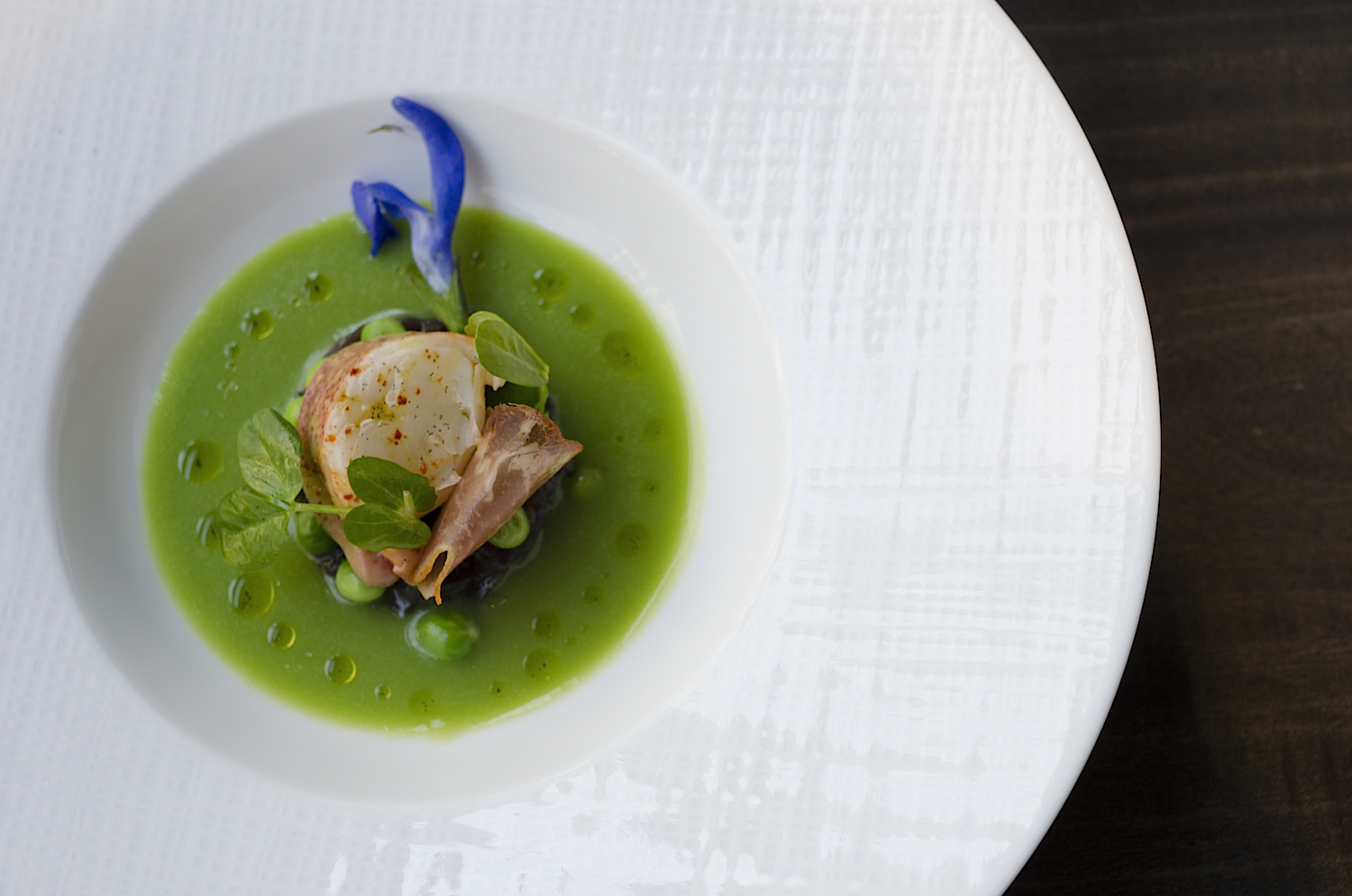 Squid is
velvety, sided with chickpeas, tangy preserved
lemon and an olive vinaigrette ($12), evoking Mr.
Duca’s Mediterranean roots, and he does an
impeccable fregola
sarda risotto ($19), rich and buttery,
tender and aromatic.
Squid is
velvety, sided with chickpeas, tangy preserved
lemon and an olive vinaigrette ($12), evoking Mr.
Duca’s Mediterranean roots, and he does an
impeccable fregola
sarda risotto ($19), rich and buttery,
tender and aromatic.It is often argued that a chef shows his true talent in simply roasting a chicken, which, frankly, is not all that difficult these days, if you begin with a full-flavored chicken. Where Mr. Duca shows his spark is in cooking the chicken to bring out those essential and to serve it with complementary black trumpet mushrooms, salsify and an “oxy” sauce, based on a chicken stock enriched with a slightly oxidized white Roussillon Grenache ($29).
There is, of course, a fine cheese plate ($18), and, as throughout the meal, Mr. Tronche is here to match the perfect wine to his and your liking, such as the 2012 Camin Larreyda Costat Darrèr from Jurançon he proposed the night I dined there.
Desserts ($11) all provide the same kind of simple, straightforward delectations, from a coffee parfait with candied orange, mint and chocolate sauce to a chocolate and caramel tart and a pommes Tatin with cinnamon crème
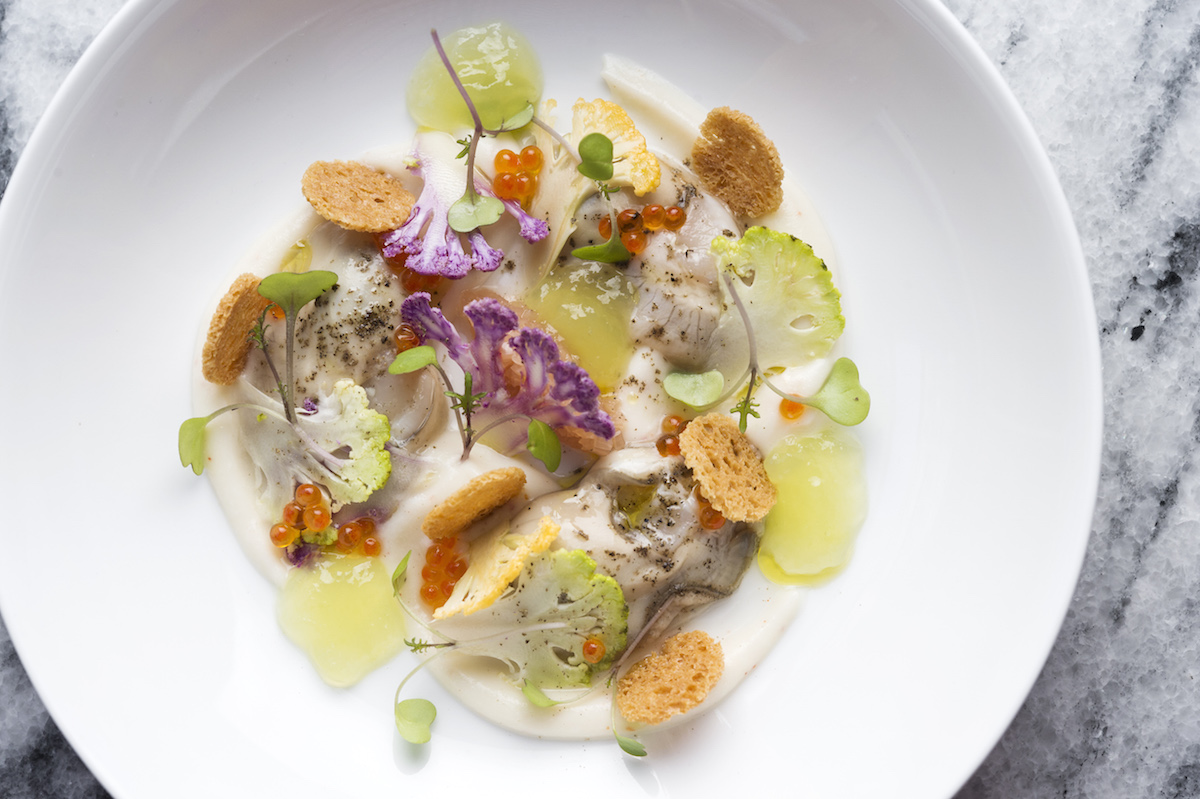 anglaise and madeliene
cookie. Nothing
fancy, just delicious.
anglaise and madeliene
cookie. Nothing
fancy, just delicious.Mr. Duca is not trying to dazzle his guests, and that is his most admirable virtue. Instead of over-thinking dishes and listing too many of them for such a small kitchen, he instead focuses with a laser’s intensity on every element of each dish--its texture, the correct temperature, when to add other ingredients, how to season. “Lovingly prepared” and “cooking from the heart” are clichés in culinary writing, but to say that the cuisine of Mr. Duca is so definably his is to pay him the highest praise.
I suspect that if I lived in Tribeca, I would be at Racines once a week, especially on those nights when I just wanted a very good meal with very nice people serving very good wines. Racines is a restaurant to cherish.
Open Mon.-Sat. for dinner. The $75 five-course menu is a terrific bargain.
NOTES FROM THE WINE CELLAR
By John Mariani
THE
WINES OF BURGENLAND, AUSTRIA
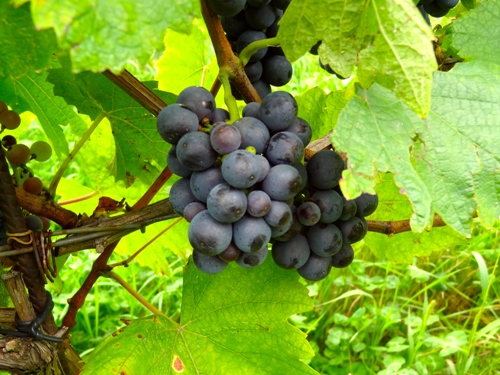 Of all
the regions of Austria that grow wine
grapes—Wachau, Kremstal, Kamptal, Donauland, and
others—the most exciting innovations are coming
out of Burgenland for wines at the Qualitätswein level as set
by the Austrian Wine Marketing
Board, created in 1986. On a recent visit I was
amazed at the breadth of varietals from the
vineyards of this southeastern region, In fact,
the Weinkulturhaus in Gols carries more than 400
labels, all from Burgenland, which now has its own
Wein Burgenland marketing association.
Of all
the regions of Austria that grow wine
grapes—Wachau, Kremstal, Kamptal, Donauland, and
others—the most exciting innovations are coming
out of Burgenland for wines at the Qualitätswein level as set
by the Austrian Wine Marketing
Board, created in 1986. On a recent visit I was
amazed at the breadth of varietals from the
vineyards of this southeastern region, In fact,
the Weinkulturhaus in Gols carries more than 400
labels, all from Burgenland, which now has its own
Wein Burgenland marketing association.
Wine has been made in Austria
for 4,000 years, and at one time it was the third
largest producer in the world; now it is
sixteenth. Vineyards
devastated by phylloxera in the 19th
century were replanted with poor quality grape
vines, and by the 1980s much of its production was
sold in bulk, which led to a few unscrupulous
wineries trying to bolster flavor by adding minute
amounts of anti-freeze-like diethylene glycol,
which caused an international scandal and
long-lasting reaction against all Austrian wines.
Since then, younger wineries,
especially in Burgenland, have been working hard
to make quality wines on a global level, and the
new wine laws and adherence to EU standards have
helped enormously.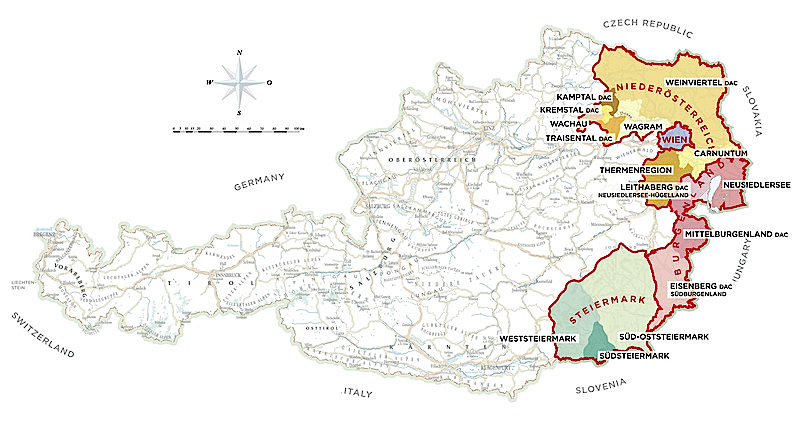 Winemakers also have eschewed the antiquated
German Fraktur font from their labels, done away
with the German term Spätburgunder for Pinot Noir,
and moved beyond the favored Müller-Thurgau and
Sylvaner white varietals once promoted for export.
While visiting Burgenland last fall, I drank its
wines while in the region, and found them well
represented in the best restaurants in Vienna. “Red
wine culture only really began in Burgenland
around 1986,” the managing director of Wein
Burgenland, Christian Zechmeister, told me
over lunch in the city of Eisenstadt. “About 30%
of the wines are red, made from Blaufränkisch (above),
Zweigelt, Blauberger, Pinot Noir, St. Laurent, and
others, and they are all being pioneered by young
winemakers.”
Winemakers also have eschewed the antiquated
German Fraktur font from their labels, done away
with the German term Spätburgunder for Pinot Noir,
and moved beyond the favored Müller-Thurgau and
Sylvaner white varietals once promoted for export.
While visiting Burgenland last fall, I drank its
wines while in the region, and found them well
represented in the best restaurants in Vienna. “Red
wine culture only really began in Burgenland
around 1986,” the managing director of Wein
Burgenland, Christian Zechmeister, told me
over lunch in the city of Eisenstadt. “About 30%
of the wines are red, made from Blaufränkisch (above),
Zweigelt, Blauberger, Pinot Noir, St. Laurent, and
others, and they are all being pioneered by young
winemakers.”
Blaufränkisch
(called Lemberger in Germany and Kekfrankos in
Hungary) means “blue Frank,” referring to the
grape’s color and the Franks who established an
empire in the middle ages. In Viennese dialect,
as in English, “frank” also suggests something
honest, and there is nothing flamboyant,
overoaked, overripe or flabby about these wines.
A late-ripening varietal, its good acidity keeps
the fruitiness in check. Occasionally a bit of
Cabernet Sauvignon, Merlot, or Zweigelt may be
mixed in.
One of the most innovative wineries
in the area is Szgeti,
whose owner Peter Szgeti, makes a wine variety of
Burgenland wines and is especially known for his
sparkling wines made from Grüner Veltliner and
Welschriesling, made in a dry, brut style. Szgeti
also makes a  prestige brut blend of
60% chardonnay and 40% blanc de blancs by the
French champenoise method, which I found did
indeed compare with very good Champagne. Yet his
sparklers never rise to the extravagant prices of
French competitors: Brut Grand Reserve is only 38
euros, his Grüners about 20.
prestige brut blend of
60% chardonnay and 40% blanc de blancs by the
French champenoise method, which I found did
indeed compare with very good Champagne. Yet his
sparklers never rise to the extravagant prices of
French competitors: Brut Grand Reserve is only 38
euros, his Grüners about 20.
I was, however, most impressed
by the Austrian red wines I tasted, for I’d never
had much interest in them before and very little
at all with those from Burgenland. I had a
splendid wine named Juris (George) from Gols, made
from the often finicky St. Laurent grape, related
to Pinot Noir, but with more body and
concentration.
It’s a varietal Burgenland vintners are
banking on to find an international audience.
Blaufränkisch is already in the
vanguard, as shown by a delicious 2013 from Weingut Ernst
Triebaumer, which is also experimenting
with blends of the varietal with Cabernet
Sauvignon and Merlot.
I was even impressed by several
Grüner Veltliners I tried—a varietal I’ve always
found bland at best. The 2013 Esterházy Estoras example
had much more flavor, with nutty and peppery
notes, and pleasant 12.5% alcohol.
These wines are made to be
drunk young, though the reds can certainly mature
with a few years in bottle. And
with prices being so reasonable, you can buy a few
bottles and taste the same vintage for years to
come to see just how bright the future of
Burgenland’s wines might be.
❖❖❖
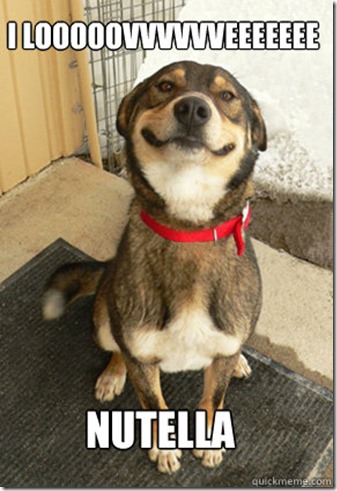
NOT TO MENTION MESSING UP THE WALLPAPER
A family in London reported
that a glass Nutella jar magnified the sun's rays in
its kitchen and started a fire that wrecked
their house and killed their dog.
"AFTER I BIT MY WAY THROUGH
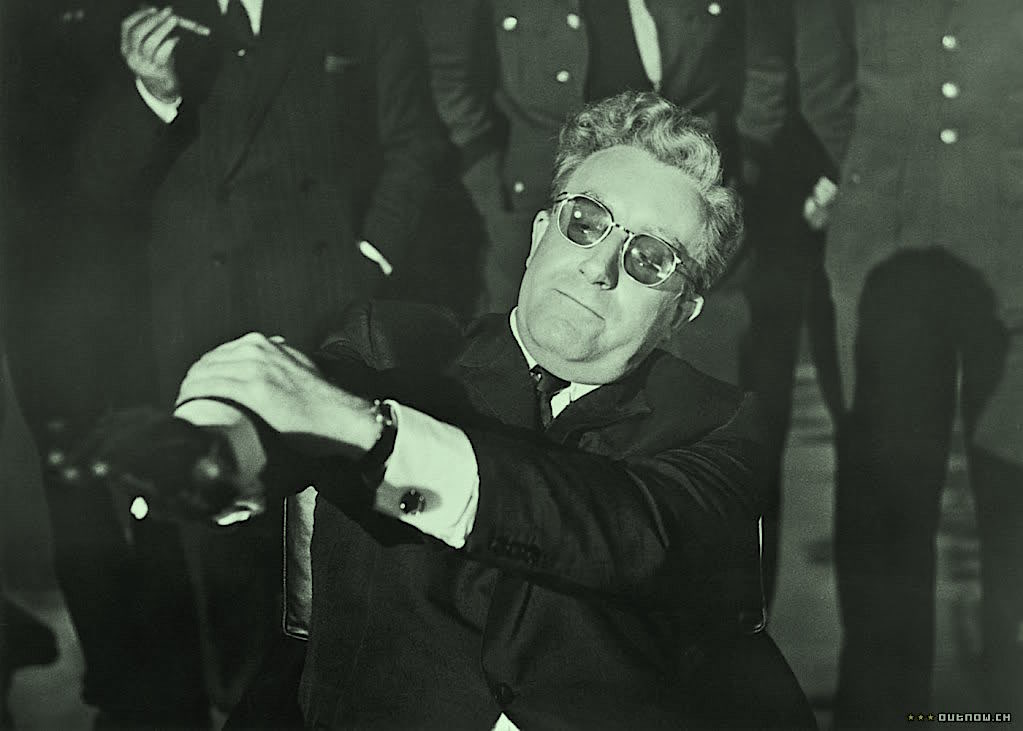
THE LEATHER CONSTRAINTS. . ."
"It was the bacon that did it. Two thick slices, sticky, crisp and chewy all at once, were a revelation of all that bacon can be. Dubbed `millionaire’s bacon' ($7), it tasted like a million bucks and was one of those dishes that you can’t get in your mouth fast enough. And that’s how I burned my tongue, by the complete inability to exert control over the fork in my hand."--Brooke Jackson, "Kitchen Sunnyside," MJournal.com.
A PRIMER ON
ITALIAN WINE LAWS
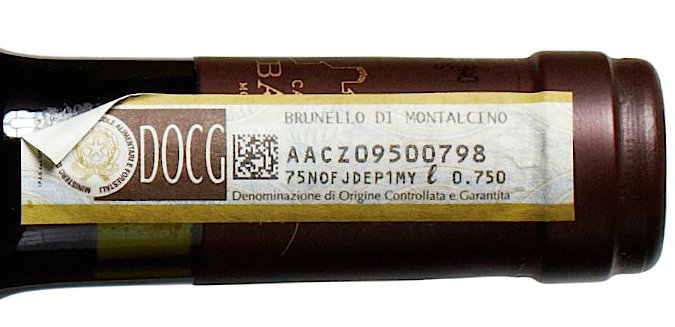
In
ancient times, Italy was dubbed the "Land of Wine"
because the vine thrives in every region -- for three
millennia, 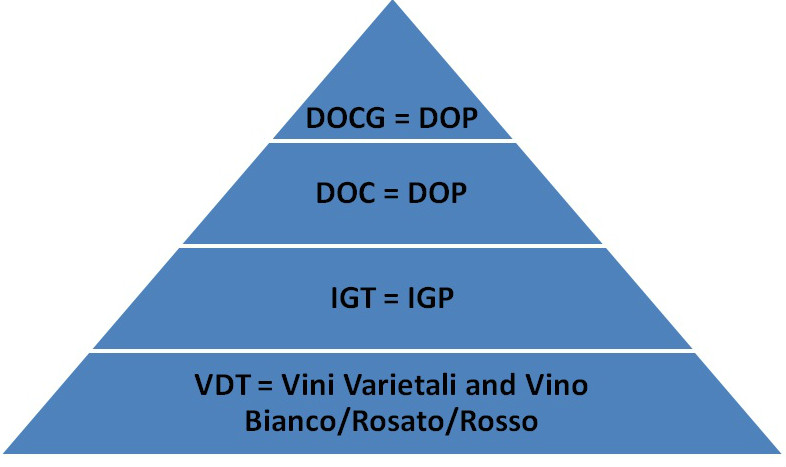 no product has been more closely
identified with that country.
no product has been more closely
identified with that country.
More recently, in response to
pressure from winemakers, the laws have been amended
to encourage experimentation with untraditional grape
varieties and techniques (e.g., “Super Tuscans”).
Additionally, since 1992 the EU began updating basic
rules that now divide wine production into two
different categories: wines with origin and wines
without origin.
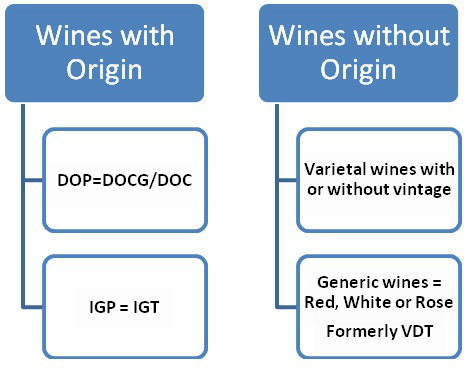 Currently, there are four
main Italian wine categories:
Currently, there are four
main Italian wine categories:
Wines
Without Origin Vini (Wine) – previously Vino da
Tavola, these simple generic wines’ labels will
state only red, white or rose.
Wines With Origin: Indicazione
Geografica Tipica (Typical Geographic Indication, or
“IGT”) - This appellation, instituted in 1992,
was intended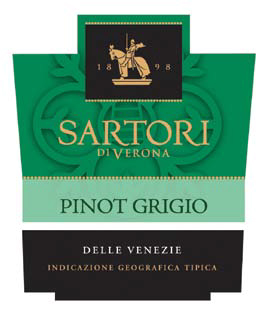 to upgrade a
major portion (about 40%) of Italy's table wine
production on par with French Vin du Pays or
German Landwein. The wine's label must declare
its specific region and may cite varietal type and
vintage. Growers or regional governments are required
to apply for IGT status just as they do for a DOC or
DOCG appellation. Currently, there are more than 100
IGTs. EXAMPLE: Sartori di Verona Pinot Grigio
delle Venezie IGT
to upgrade a
major portion (about 40%) of Italy's table wine
production on par with French Vin du Pays or
German Landwein. The wine's label must declare
its specific region and may cite varietal type and
vintage. Growers or regional governments are required
to apply for IGT status just as they do for a DOC or
DOCG appellation. Currently, there are more than 100
IGTs. EXAMPLE: Sartori di Verona Pinot Grigio
delle Venezie IGT
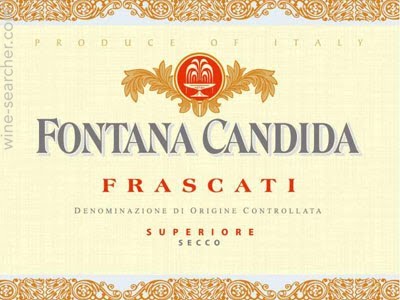 Denominazione
di Origine Controllata
(Denomination of Controlled Origin, or “DOC”) - Wines
bearing this appellation are registered by the
government. Their labels must state zone of origin and
the wines are required to meet certain production
standards. E.g., only approved methods of planting,
cultivating, and fertilizing can be employed. Maximum
yields are controlled, as are bottling specifications,
alcohol content, and aging. The products and their
claims are subject to government review at any time.
There are currently about 300 DOCs. EXAMPLE: Fontana
Candida Frascati DOC
Denominazione
di Origine Controllata
(Denomination of Controlled Origin, or “DOC”) - Wines
bearing this appellation are registered by the
government. Their labels must state zone of origin and
the wines are required to meet certain production
standards. E.g., only approved methods of planting,
cultivating, and fertilizing can be employed. Maximum
yields are controlled, as are bottling specifications,
alcohol content, and aging. The products and their
claims are subject to government review at any time.
There are currently about 300 DOCs. EXAMPLE: Fontana
Candida Frascati DOC
Denominazione di Origine
Controllata e Garantita
(Denomination of Controlled and Guaranteed Origin, or
“DOCG”) - The most stringent of the categories, this
appellation embraces all DOC assurances and further
requires a producer to control and guarantee
everything claimed on the wine's label: zone of
origin, net contents, 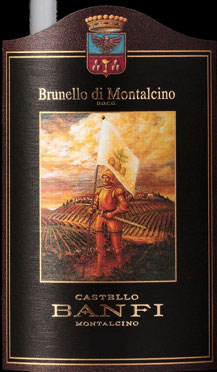 name of grower
and bottler, place of bottling, and alcohol strength.
Affixed to the bottle is a government seal of
approval, and the wine is subject to analysis at any
time by government inspectors. EXAMPLE: Castello Banfi
Brunello di Montalcino DOCG
name of grower
and bottler, place of bottling, and alcohol strength.
Affixed to the bottle is a government seal of
approval, and the wine is subject to analysis at any
time by government inspectors. EXAMPLE: Castello Banfi
Brunello di Montalcino DOCG
Although
DOC and DOCG were established in 1963, the first DOC
was not awarded until 1966 (Vernaccia di San
Gimignano), and the first DOCG not until 1980
(Brunello di Montalcino). One thing to keep in mind is
that these classifications guarantee ONLY that a wine
comes from the place stated on its label – it’s not
necessarily a guarantee of quality. The most reliable
indicator of quality is the producer. Your best bet is
to check the label for a winery with a strong
reputation and history of consistently making great
wine, such as Castello Banfi.
Any of John Mariani's books below may be ordered from amazon.com.
 I'm proud and happy to announce that my
new book, The Hound
in Heaven (21st Century Lion Books), has just
been published through Amazon and Kindle.
I'm proud and happy to announce that my
new book, The Hound
in Heaven (21st Century Lion Books), has just
been published through Amazon and Kindle. It is a novella, and for anyone who loves dogs, Christmas, romance, inspiration, even the supernatural, I hope you'll find this to be a treasured favorite. The story concerns how, after a New England teacher, his wife and their two daughters adopt a stray puppy found in their barn in northern Maine, their lives seem full of promise. But when tragedy strikes, their wonderful dog Lazarus and the spirit of Christmas are the only things that may bring back his master back from the edge of despair.
WATCH THE VIDEO!
“What a huge surprise turn this story took! I was completely stunned! I truly enjoyed this book and its message.” – Actress Ali MacGraw
“He had me at Page One. The amount of heart, human insight, soul searching, and deft literary strength that John Mariani pours into this airtight novella is vertigo-inducing. Perhaps ‘wow’ would be the best comment.” – James Dalessandro, author of Bohemian Heart and 1906.
“John Mariani’s Hound in Heaven starts with a well-painted portrayal of an American family, along with the requisite dog. A surprise event flips the action of the novel and captures us for a voyage leading to a hopeful and heart-warming message. A page turning, one sitting read, it’s the perfect antidote for the winter and promotion of holiday celebration.” – Ann Pearlman, author of The Christmas Cookie Club and A Gift for my Sister.
“John Mariani’s concise, achingly beautiful novella pulls a literary rabbit out of a hat – a mash-up of the cosmic and the intimate, the tragic and the heart-warming – a Christmas tale for all ages, and all faiths. Read it to your children, read it to yourself… but read it. Early and often. Highly recommended.” – Jay Bonansinga, New York Times bestselling author of Pinkerton’s War, The Sinking of The Eastland, and The Walking Dead: The Road To Woodbury.
“Amazing things happen when you open your heart to an animal. The Hound in Heaven delivers a powerful story of healing that is forged in the spiritual relationship between a man and his best friend. The book brings a message of hope that can enrich our images of family, love, and loss.” – Dr. Barbara Royal, author of The Royal Treatment.
 |
The Encyclopedia of American Food and Drink by John F. Mariani (Bloomsbury USA, $35) Modesty forbids me to praise my own new book, but let me proudly say that it is an extensive revision of the 4th edition that appeared more than a decade ago, before locavores, molecular cuisine, modernist cuisine, the Food Network and so much more, now included. Word origins have been completely updated, as have per capita consumption and production stats. Most important, for the first time since publication in the 1980s, the book includes more than 100 biographies of Americans who have changed the way we cook, eat and drink -- from Fannie Farmer and Julia Child to Robert Mondavi and Thomas Keller. "This book is amazing! It has entries for everything from `abalone' to `zwieback,' plus more than 500 recipes for classic American dishes and drinks."--Devra First, The Boston Globe. "Much needed in any kitchen library."--Bon Appetit. |
"Eating Italian will never be the same after reading John Mariani's entertaining and savory gastronomical history of the cuisine of Italy and how it won over appetites worldwide. . . . This book is such a tasteful narrative that it will literally make you hungry for Italian food and arouse your appetite for gastronomical history."--Don Oldenburg, USA Today. "Italian
restaurants--some good, some glitzy--far
outnumber their French rivals. Many of
these establishments are zestfully described
in How Italian Food Conquered the World, an
entertaining and fact-filled chronicle by
food-and-wine correspondent John F.
Mariani."--Aram Bakshian Jr., Wall Street
Journal.
"Equal parts
history, sociology, gastronomy, and just
plain fun, How Italian Food Conquered the
World tells the captivating and delicious
story of the (let's face it) everybody's
favorite cuisine with clarity, verve and
more than one surprise."--Colman Andrews,
editorial director of The Daily
Meal.com. "A fantastic and fascinating
read, covering everything from the influence
of Venice's spice trade to the impact of
Italian immigrants in America and the
evolution of alta cucina. This book will
serve as a terrific resource to anyone
interested in the real story of Italian
food."--Mary Ann Esposito, host of PBS-TV's
Ciao
Italia. "John Mariani has written the
definitive history of how Italians won their
way into our hearts, minds, and
stomachs. It's a story of pleasure over
pomp and taste over technique."--Danny Meyer,
owner of NYC restaurants Union Square
Cafe, The Modern, and Maialino.
|
 |
 |
 |
 |
 |
 |
 |
 |
 Everett Potter's Travel Report:
Everett Potter's Travel Report: 
 Eating Las Vegas
is the new on-line site for Virtual Gourmet
contributor John A. Curtas., who since 1995
has been commenting on the Las Vegas food
scene and reviewing restaurants for Nevada
Public Radio. He is also the
restaurant critic for KLAS TV, Channel 8 in
Las Vegas, and his past reviews can be
accessed at KNPR.org.
Click on the logo below to go directly to
his site.
Eating Las Vegas
is the new on-line site for Virtual Gourmet
contributor John A. Curtas., who since 1995
has been commenting on the Las Vegas food
scene and reviewing restaurants for Nevada
Public Radio. He is also the
restaurant critic for KLAS TV, Channel 8 in
Las Vegas, and his past reviews can be
accessed at KNPR.org.
Click on the logo below to go directly to
his site.

Tennis Resorts Online: A Critical Guide to the World's Best Tennis Resorts and Tennis Camps, published by ROGER COX, who has spent more than two decades writing about tennis travel, including a 17-year stretch for Tennis magazine. He has also written for Arthur Frommer's Budget Travel, New York Magazine, Travel & Leisure, Esquire, Money, USTA Magazine, Men's Journal, and The Robb Report. He has authored two books-The World's Best Tennis Vacations (Stephen Greene Press/Viking Penguin, 1990) and The Best Places to Stay in the Rockies (Houghton Mifflin, 1992 & 1994), and the Melbourne (Australia) chapter to the Wall Street Journal Business Guide to Cities of the Pacific Rim (Fodor's Travel Guides, 1991).


MARIANI'S VIRTUAL GOURMET
NEWSLETTER is published weekly. Editor/Publisher: John
Mariani.
Editor: Walter Bagley. Contributing Writers: Christopher Mariani,
Robert Mariani, Misha
Mariani,
John A. Curtas, Edward Brivio, Mort Hochstein,
Andrew Chalk, Dotty Griffith and Brian Freedman. Contributing
Photographers: Galina Dargery, Bobby
Pirillo. Technical Advisor: Gerry McLoughlin.
To un-subscribe from this newsletter,click here.
© copyright John Mariani 2015

